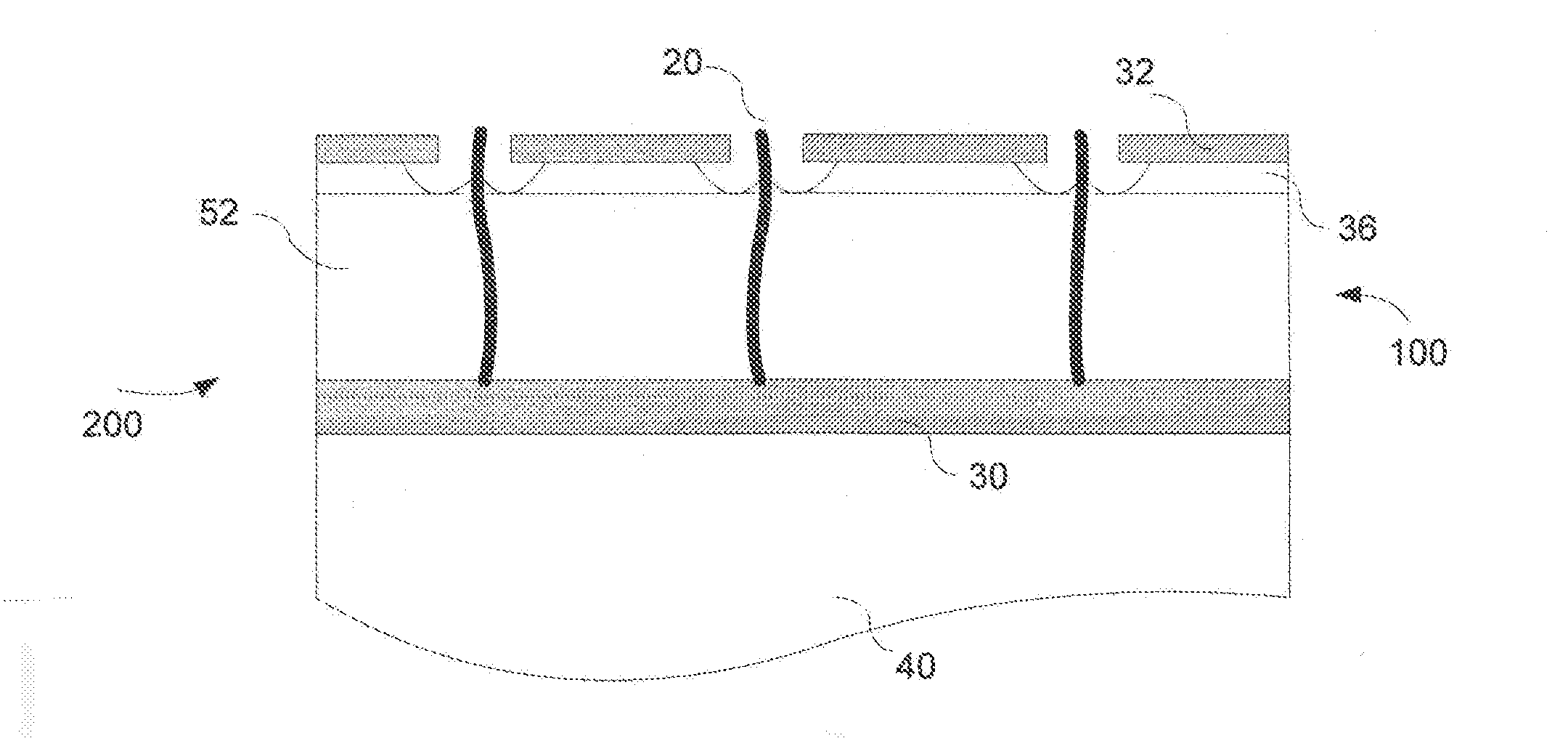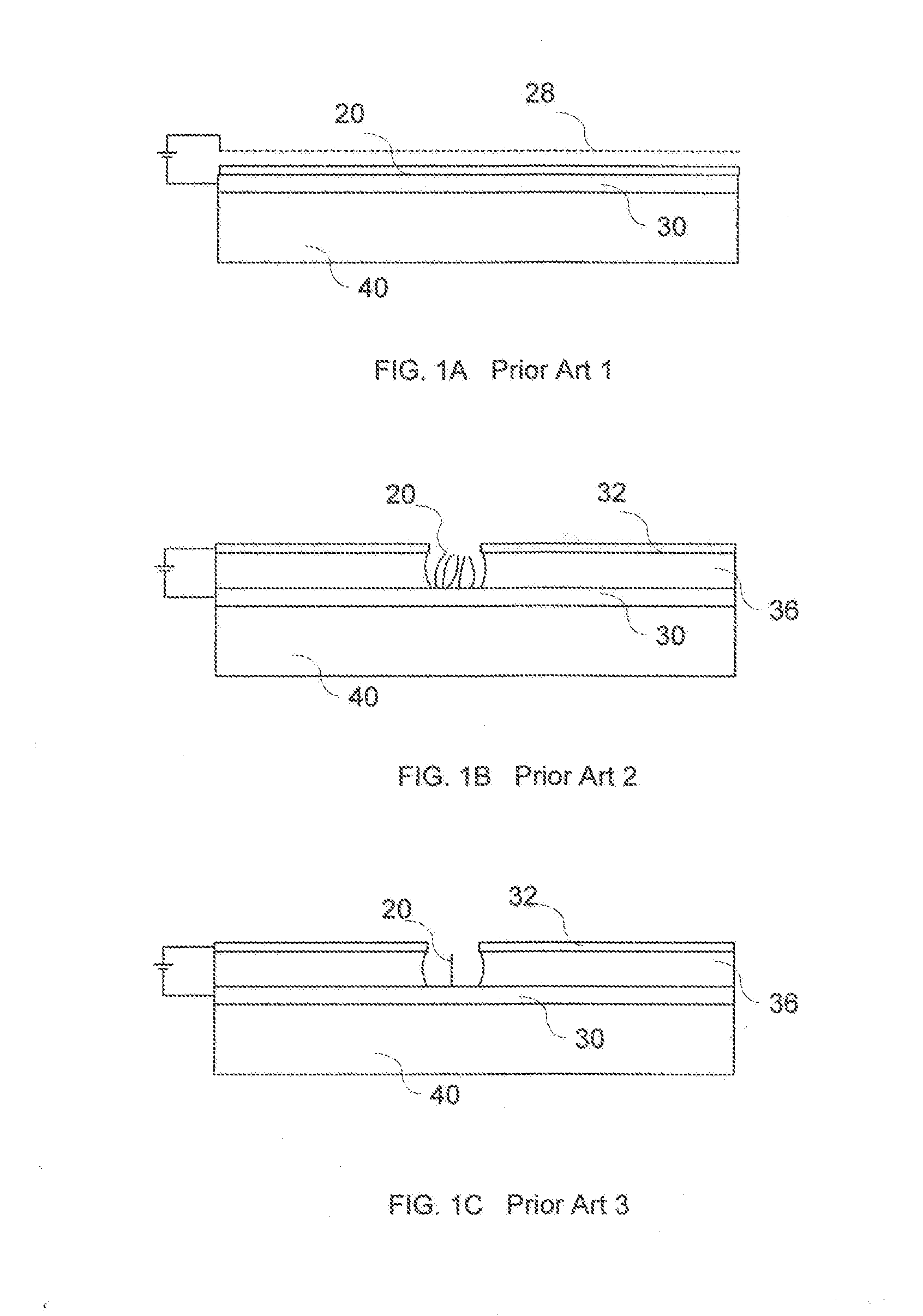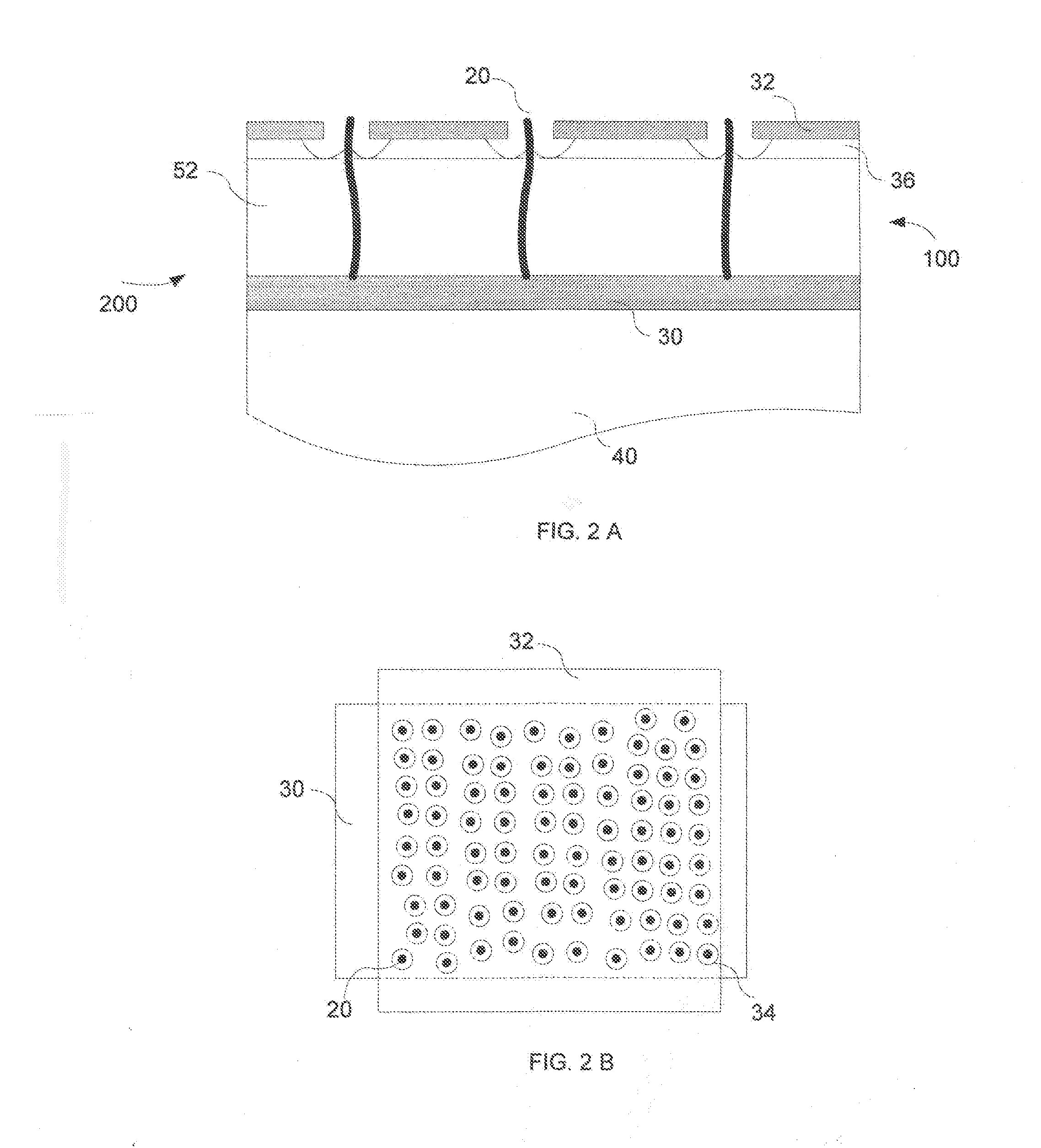Low voltage electron source with self aligned gate apertures, fabrication method thereof, and x-ray generator using the electron source
a low-voltage electron source and gate aperture technology, which is applied in the manufacture of electrode systems, electrodes, electric discharge tubes/lamps, etc., can solve the problems of device drivers, power consumption, and current state of the art of cnt electron sources that do not meet the above requirements
- Summary
- Abstract
- Description
- Claims
- Application Information
AI Technical Summary
Benefits of technology
Problems solved by technology
Method used
Image
Examples
Embodiment Construction
[0086]FIG. 2 illustrates an electron source 200 by current invention using vertically aligned and mono-dispersed CNT 20 as emitter. It includes a cathode electrode 30 deposited on a substrate 40; an emitter layer 100 disposed over the cathode and formed from an embedding dielectric 52 and an array of CNTs embedded therein, the emitter layer having a surface parallel to which the CNTs have been truncated to the same length, and above the surface the CNTs protrude by a small fraction of one micrometer; a gate insulator 36 disposed over the emitter layer of a thickness on the order of 100 nm and having an array of apertures, each aligned with and exposes one nano-structure in the emitter layer; and a gate electrode 32 deposited on the gate insulator and having an array of apertures 34 aligned with the apertures in the insulator and spaced from the exposed CNT by a distance equal to the thickness of the insulator. When a positive voltage is applied between the gate and the cathode elect...
PUM
 Login to View More
Login to View More Abstract
Description
Claims
Application Information
 Login to View More
Login to View More - R&D
- Intellectual Property
- Life Sciences
- Materials
- Tech Scout
- Unparalleled Data Quality
- Higher Quality Content
- 60% Fewer Hallucinations
Browse by: Latest US Patents, China's latest patents, Technical Efficacy Thesaurus, Application Domain, Technology Topic, Popular Technical Reports.
© 2025 PatSnap. All rights reserved.Legal|Privacy policy|Modern Slavery Act Transparency Statement|Sitemap|About US| Contact US: help@patsnap.com



